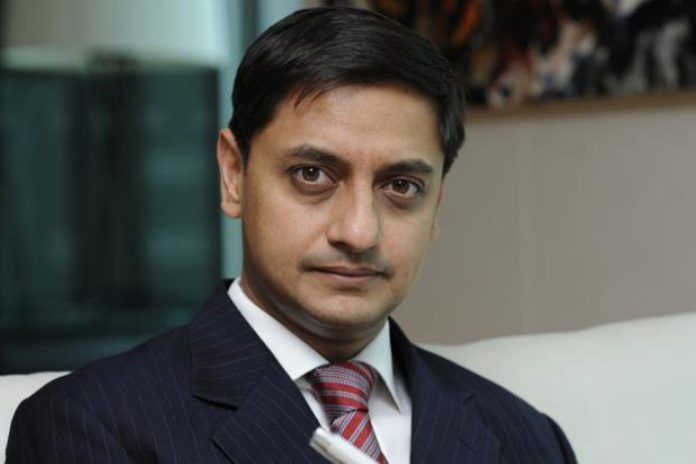Q: This was a commitment made by the finance minister in the budget which is now been taken forward by the Prime Minister with the unveiling of the transparent tax portal today. While I understand that the emphasis is on reducing litigation, on improving compliance, on bringing down complexity further and of course moving to a system of faceless assessment and appeals, what is it going to result in? Where will this take our tax to GDP ratio for instance, what is the expectation on what this could do for tax collections?
A: The first thing to understand about this is that we are changing the underlying architecture and philosophy of the tax system. So it is not just about taking a short term sort of a measure, this is really reconfiguring the philosophy of the taxation. So as the Prime Minister himself said, many of our policies, particularly tax policies, are derived from a colonial era where there is an inbuilt distrust of the citizen and then of course overlaid by a socialist era distrust of profit making so to speak. So what we are really doing is changing the underlying philosophy of the tax system. The idea here is that not only is it automated, but it is faceless because there were as you know many discussion about systems being slow, occasional harassment and even rent-seeking sometimes. So the idea is that now that you have a system that is sort of randomised and faceless, then consequently radically reducing opportunities or such problems to arise. You have to remember that this is being done at the same time that a taxpayer’s charter is also being put in place. So you have to see it in entirety. 14 commitments have been given by the Income Tax Department and you have also separately seen a bunch of notifications that should be already out on Twitter about what are the conditions. So in that sense this is not just a small organic incremental change, this is a fundamental rewiring of the philosophy of how the taxation system works.
Q: Since you talk about this being a rewiring of the tax system so to speak, I want to go back again to ask you what it is finally going to mean when it comes to execution. Now the feedback for instance from many tax experts who watched what the Prime Minister and the tax department has had to say today is that look at least the CBDT as an immediate relief should instruct the release of all pending refunds otherwise companies are forced to move courts. So could that not have been, or is that likely to be a follow through action on the promises made today?
A: We need to separate the two out a little bit. One is what we are doing now is working on the underlying architecture and then there is the other issue of policy which of course – I mean there is no doubt that refunds etc. should be sped up and finance minister has spoken about that repeatedly. We in fact have been speeding it up even before this, but that was not really the focus of what we were trying to do today which is trying to rewire the architecture. But since you brought it up, it is an important issue and the government is aware of it and finance minister in her own speech did mention that refunds and other things are being sped up and some of it has already been released from what I gather.
Q: What will it mean in terms of collections, what will it mean in terms of tax growth? The Prime Minister gave us a number of 1.5 crore taxpayers out of a 130 crore, but the numbers that we have, total I-T returns filed for the year 2018-19, 6.74 crore, number of persons filing returns for 2018-19 stands at 6.33 crore — now not to get into the argument about whether it is 1.5 or 6.33, the number is low. The question though is what is the roadmap on moving this significantly higher, what is the target?
A: The idea here is to make tax paying a part of the sort of the general culture. Now it works both ways, and which is why we see the taxpayers’ charter, it has both commitments from the tax department, but it also has certain duties expected from the taxpayers. So it works both ways and of course it is a virtuous cycle. So as more people come on to the tax system and a culture of trust gets built, then what happens is, it allows us then to simplify it, lower the tax rates. Ultimately what is our aim, our aim is that a large number of people pay relatively little amounts of tax with as little friction in the transaction as possible – that is the ultimate aim. Also once the system of trust comes up, then what happens here is that we can also simplify. I think the Prime Minister also mentioned what is one of the problem is this – that we are spending enormous amounts of energy complicating the system in order to catch a small number of non-compliant people. But in fact what is happening as a result is large numbers of otherwise compliant people are getting inconvenience by this. So it is a vicious cycle because you end up making the system even more complex and consequently the compliant are further inconvenienced and so on and so forth. Of course a complex system can be gamed even more easy by those who want to be non-compliant. So what we really want is a simple system, a system of trust and lower tax rates — that is basically what we want to move towards. The architecture for that is being put in place, some of the steps for that, the faceless assessment and all of that is one part of it, the taxpayers’ charter is another part of it and of course many other things that are also being done. I mean you have already seen on the corporate tax rates, we have lowered them very significantly. So these are all one-by-one, you can see systematically heading in a particular direction.
Q: You talked about lowering tax rates and that being the eventual goal, but do you believe that there is room to do much more on that front whether it is corporate taxation or income tax because we have not seen the widening of the tax base and given the situation that the government finds itself in with collections at this point in time, will this goal have to be pushed out further?
A: Not really, because what we are trying to do is, the administration part of it, bits of that has to be put in place one by one irrespective because the gain from that happen in the long run anyway. So, you got to start right now. So, for example, when you are talking about the taxpayers’ charter, this doesn’t impinge in anyway with the current taxation revenues that you are collecting irrespective of whether we are going up or down in the economic cycle. This has to be put in place. Same thing is with the architecture we have put in place in terms of faceless assessments and the IT infrastructure for it; that needs to be done irrespective. So, I don’t think we should begin to get diverted into the short term requirements of revenue collection which are important of course, but these longer term architectural issues are something that we cannot delay indefinitely. So, we have to begin putting them in place. It takes time for the benefits of this to come – for example, with the taxpayers’ charter, we will need to create mechanisms for making sure that these are enforced and in fact item number 11 of the taxpayers’ charter still says that provide a mechanism to lodge a complaint. So those mechanisms have to be created and so it takes time, step by step and of course in many cases we will have to get feedbacks. Sometimes things will not work, we will have to rejig it a little and so on. So, all of this takes time. We cannot let our current revenue collection difficulties because of cyclical reasons be thrown off by what is clearly a fundamental change in the architecture.
Q: Let me ask you about what you make of the current revenue situation in the context of where the economy is. The finance ministry in its latest snapshot on the economy has spoken about how the re-imposition of these many lockdowns is in fact hurting the fragile recovery that we are currently seeing. What is your own sense now about where things currently stand? The finance ministry was looking at high frequency data, we have seen a tapering off in July versus the month of June, what is the data tell you currently about the state of play?
A: When you do something like a lockdown, maybe there are good health reasons for doing it, but you cannot look away from the fact that it has an economic cost that comes with it. When you had a full lockdown as you had in the starting of March and end of April, there are many sectors that are literally brought to a halt. Now as we have gone through time, we have opened these things up step by step. First, lockdown 1, 2, 3 and so on and then now through the unlocking process. In many cases those sectors there was some element of pent up demand which is getting released for example in the purchase of cars for example there is recovery. But there are sectors for example tourism that will take time to come back. So, all of this takes a bit if time and of course there will be several occasions where the health requirements of that time, say for example there is an outbreak somewhere, so then we have to make those tradeoffs; that is why it is a difficult thing to do. But where we have to look after human lives, we have to make a tradeoff and step back in the economic trajectory, now, does that have a revenue implication? Yes, it does have, but that is what we as a society need to accept at some level that there will be such hits. But the good news is I think we are getting better and better with dealing the health part of things. There are many vaccines in the pipeline from what I gather, I am not an expert of this, and so I think I am quite confident that as we come out of the stage where we were mostly focused on, the health part of it, and cushioning the economic impact and we will then transition to a rebuilding phase where we can press back – we have taken our foot off the brake and we can begin to press accelerate.
Q: You spoke about rebuilding, but let me ask you about what the assessment now is in terms of the state of the economy because the Reserve Bank of India (RBI) has reiterated that this year is likely to see a contraction for FY21. Closer to 5 percent, less, more, what is the internal estimate?
A: We are in an evolving situation. So putting a hard number is difficult unless you can tell me when exactly this whole thing will end not just in India, worldwide because the global situation also impacts us. So, it is very difficult to put a hard number, but the finance ministry’s view by and large coincides with that of RBI. So, there is significant impact on the economy, there is no doubt about it.




























